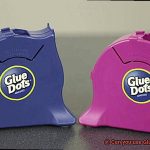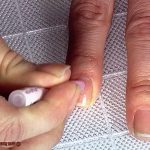Title: Frozen Glue: A Sticky Situation
Introduction:
Contents
- 1 What is Glue?
- 2 How Does Freezing Affect Glue?
- 3 Different Types of Glues and Their Resilience to Freezing Temperatures
- 4 Checking Manufacturer Instructions and Product Labeling
- 5 Impact of Frozen Glue on Bonding Properties
- 6 Thawing Out Frozen Glue
- 7 Restoring Adhesive Properties After Thawing
- 8 Storing Glue in Cool, Dry Places
- 9 Cold-Resistant Glues for Working in Cold Environments
- 10 Conclusion
Hey there crafters and DIY enthusiasts. Today, we’re tackling a burning question that’s left many of us scratching our heads: Can glue still do its thing after a deep freeze? Whether you accidentally stashed your adhesive in the freezer or you’re just curious about its icy endurance, we’ve got the answers you need.
Glue, that trusty sidekick in our creative endeavors, has an uncanny ability to bond materials together. But what happens when it faces freezing temperatures head-on? Does it lose its stickiness or can it bounce back like a frozen superhero? Get ready to dive into the fascinating world of glue as we uncover the truth behind its frosty encounters.
Join us as we explore the science behind glue and freezing temperatures, unravel the effects of ice crystals on its consistency, and discover if a frozen glue mishap can be fixed with a simple thawing process. So grab your favorite warm beverage, get cozy, and embark on this sticky adventure with us.
What is Glue?
Glue, a magical substance that bonds materials together, has been an indispensable tool for centuries. From delicate crafts to heavy-duty repairs, glue holds our world together. But what exactly is glue, and how does it work? In this article, we will dive into the fascinating world of adhesion and explore the science behind this sticky wonder.
Composition and Function:
Glue is a concoction of ingredients carefully crafted to create a powerful adhesive. At its core lies a polymer base, which forms the backbone of the glue’s adhesive properties. This polymer base chemically adheres to surfaces, creating a bond that withstands time and pressure. To facilitate easy application, glue contains a solvent or water carrier that helps spread the polymer evenly. As the solvent evaporates or the water dries, the adhesive bond solidifies, securing the materials together.
Enhancing Properties:
To enhance specific characteristics, additives are introduced into glue formulations. These additives can work wonders—improving drying time, boosting flexibility, increasing strength, and even providing unique textures and colors. Plasticizers add flexibility to glue, ensuring it can withstand movement without cracking or breaking. Resins enhance strength and durability, making glue capable of withstanding heavy loads. Thickeners provide viscosity to prevent runny glue from creating messy applications.
Types of Glue:
Glue comes in an array of types tailored for different purposes and materials. Craft glue is perfect for lightweight materials like paper or fabric, while wood glue is designed specifically for bonding wood surfaces with unmatched strength. Super glue, known for its rapid-drying properties, creates instant bonds between small objects. Epoxy resin boasts exceptional strength and is commonly used in construction and industrial applications. Hot glue reigns supreme in temporary and semi-permanent bonds due to its quick solidification upon cooling.
Freezing Effects:
Despite its remarkable capabilities, glue is not impervious to the cold. Freezing temperatures can alter the chemical composition of glue, rendering it brittle and inflexible. The adhesion properties may suffer, compromising the strength of the bond. However, the extent of these effects varies among glue types. Craft glue and wood glue may be more resilient to freezing than super glue or epoxy resin.
Usability and Prevention:

To assess the usability of frozen glue, consult the manufacturer’s instructions or product labeling. Thawing at room temperature may salvage some glues, but full restoration of adhesive properties cannot be guaranteed. To prevent damage from freezing, store glue in a cool, dry place away from extreme temperatures. For those working in cold environments or anticipating freezing conditions, specialized cold-resistant glues offer reliable performance.
How Does Freezing Affect Glue?
Glue is a remarkable substance that holds our world together, from repairing broken toys to creating intricate arts and crafts projects. However, freezing temperatures can have a detrimental effect on this sticky superhero. In this section, we will delve into the impact of freezing on glue and provide tips to prevent any sticky situations.
The Sticky Situation:

Imagine this – you’ve spent hours working on a project, carefully gluing pieces together, only to discover that your glue has been exposed to freezing temperatures. Disaster strikes. Freezing can wreak havoc on glue, compromising its effectiveness and weakening the bond.
The Science Behind It:
Freezing can cause some unfavorable transformations when it comes to glue. Water-based glues, in particular, are susceptible to freezing temperatures. These glues contain water as a solvent, and when water freezes, it expands. This expansion alters the glue’s structure, reducing its adhesive properties and increasing the likelihood of failure.
Not Just Water-Based Glues:
But wait. It’s not only water-based glues that suffer in freezing conditions. Even super glues or epoxy adhesives can fall victim to the icy wrath. These glues often contain chemicals that are sensitive to extreme temperatures, resulting in decreased effectiveness or solidification into useless lumps.
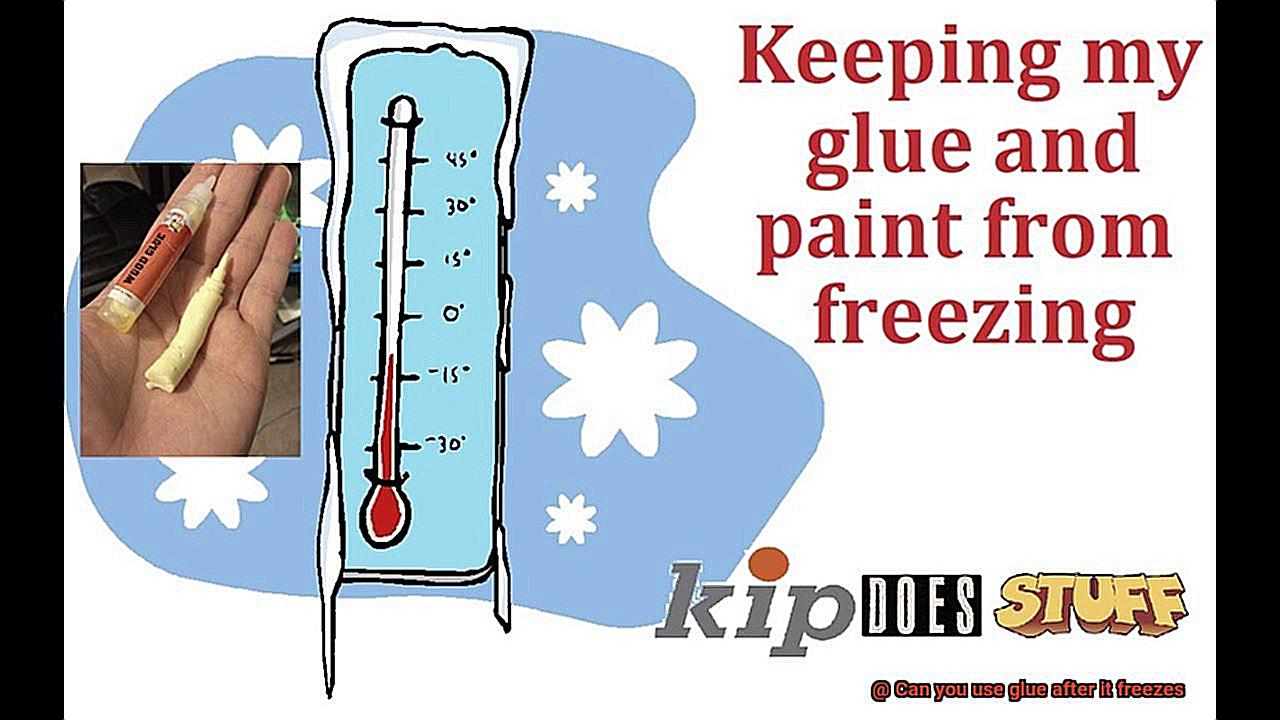
Multiple Thaws, Less Effectiveness:
Similar to Elsa’s powers in Frozen, repeated freezing and thawing cycles can significantly impair your glue’s bonding capabilities. Each temperature change further weakens the glue, leading to diminished adhesion. If you find yourself repeatedly subjecting your glue to freezing and thawing, it might be time to let it go and acquire a fresh supply.
Preventing the Cold Snap:
Proper storage is key to maintaining an effective bond with your glue. Store it in a cool, dry place away from extreme temperatures. Avoid leaving it in freezing garages or scorching attics. By providing the right environment, you can ensure the longevity and efficacy of your glue.
Thaw and Test:
If you suspect that your glue has been frozen, don’t panic just yet. Thaw it and test its consistency and performance on a non-sensitive surface. This simple step allows you to determine if the glue is still up to the task or if it’s time to bid farewell.
Different Types of Glues and Their Resilience to Freezing Temperatures
Glue, the magical substance that binds materials together, can be affected by extreme cold. Understanding how different types of glue react to freezing temperatures is crucial for ensuring their effectiveness. This essay explores the various types of glue and their resilience when faced with freezing conditions.
The Diverse Types of Glue:
Glue comes in a multitude of variations, each with its own set of superpowers. Wood glue, renowned for its toughness, can withstand freezing temperatures and maintain its adhesive properties. However, super glue, the quick-fix superhero, becomes brittle and less sticky when frozen.
PVA Glue:
PVA glue, also known as white or school glue, is not fond of freezing temperatures. When exposed to extreme cold, this glue can freeze and lose its adhesive strength. Therefore, it is necessary to keep PVA glue warm to ensure its stickiness.
Epoxy Resin:
Epoxy resin, a high-end adhesive consisting of two parts that are mixed together, possesses strong bonding capabilities and can endure extreme temperatures. While it may thicken in the cold, it maintains its adhesive properties after thawing.
Super Glue:
Super glue, like a superhero in the world of adhesives, quickly bonds materials together. However, when exposed to freezing temperatures, it becomes brittle and loses its stickiness. Storing super glue in a cool but not freezing environment is recommended to maintain its effectiveness.
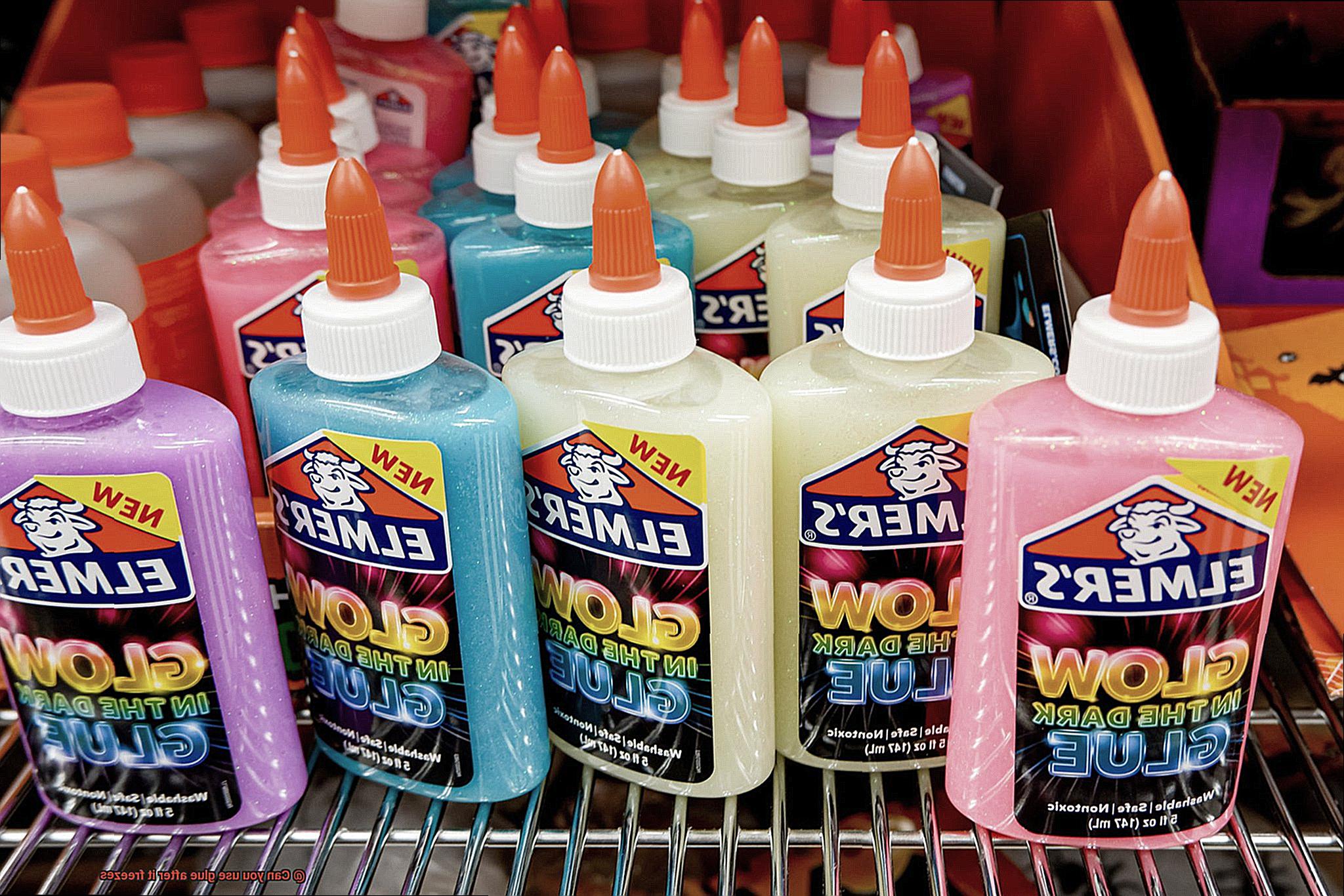
Special Outdoor Glues:
Certain glues are specifically designed for outdoor use and can withstand freezing temperatures with ease. These glues are formulated to remain sticky even in the coldest conditions.
Checking Manufacturer Instructions and Product Labeling
When it comes to using glue after it freezes, checking the manufacturer instructions and product labeling is crucial. Here’s why:
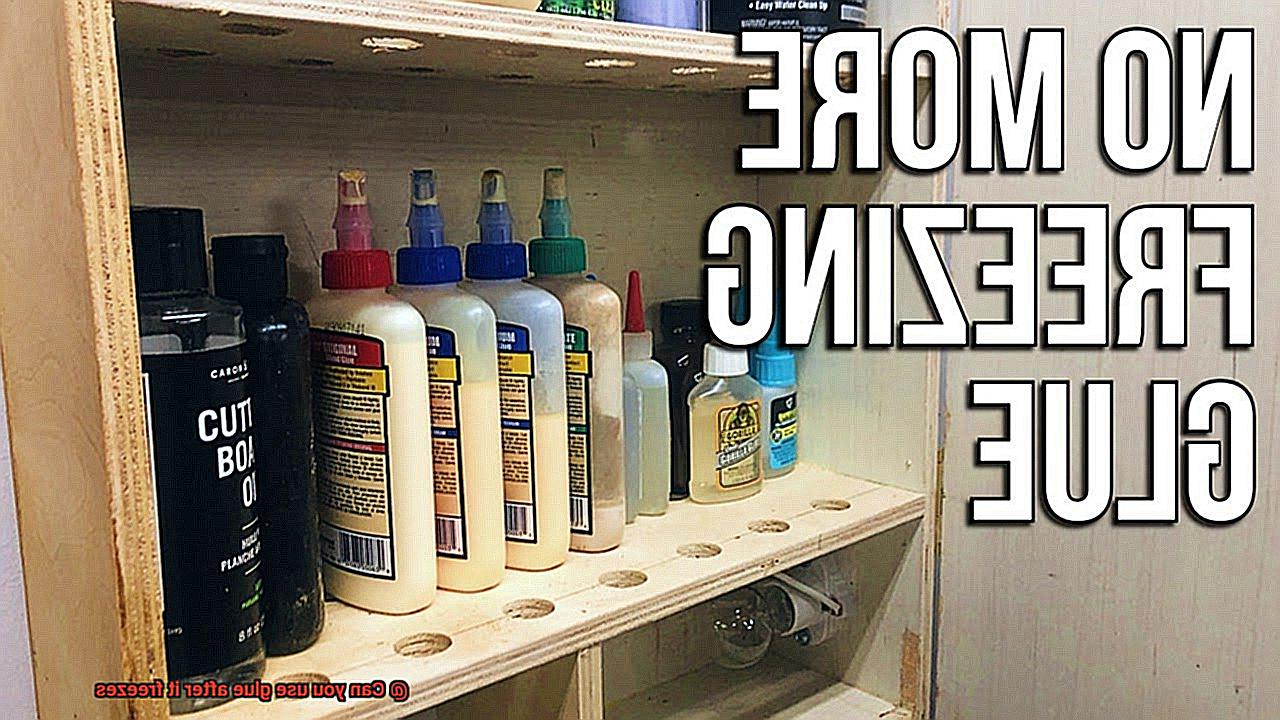
- Storage Secrets: Manufacturer instructions reveal the ideal storage conditions for glue, including temperature ranges that keep it in top shape. Consult these instructions to determine if your frozen glue is still usable.
- Thawing Techniques: Different glues react differently to freezing temperatures. Some require thawing to regain their adhesive superpowers, while others may need to be discarded. The manufacturer instructions guide you on how to handle each type of frozen glue.
- Labeling Clues: Product labels hold valuable information about your glue. They may reveal how freezing affects its adhesive properties or if it becomes ineffective altogether. Read these labels to make an informed decision about using frozen glue.
- Warnings and Wisdom: Manufacturers sometimes caution against using frozen glue, as it may result in weaker bonds or adhesive failure. Heed these warnings and avoid potential disasters.
- Glue Variety Show: Not all glues are created equal when it comes to freezing temperatures. Some shrug off cold like superheroes, while others crumble like ice sculptures in July. Check the manufacturer instructions and product labeling to understand how your specific glue will react.
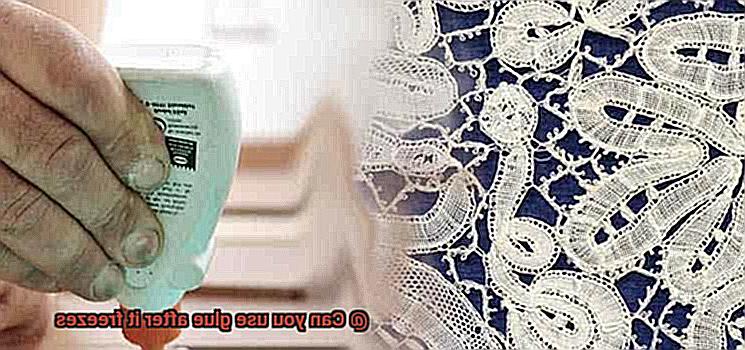
By checking manufacturer instructions and product labeling, you ensure that your glue is used correctly and optimally. This knowledge minimizes risks and adverse effects from compromised adhesive products.
Impact of Frozen Glue on Bonding Properties
In this blog post, we will explore the fascinating impact of frozen glue on bonding properties. By delving into the frozen glue’s effects on strength, durability, and adhesive properties, we will shed light on this intriguing topic.
Effects of Freezing on Glue:
When glue freezes, a dramatic physical transformation occurs that significantly alters its bonding properties. The freezing process renders the glue more brittle and less flexible, resulting in a bond that is weaker and less durable than that of unfrozen glue. Imagine attempting to connect two pieces of wood using frozen glue – the bond would likely crumble under pressure, leaving you with a project in ruins.
Loss of Adhesive Properties:
The consequences of freezing extend beyond brittleness; frozen glue can also experience a loss of its adhesive properties. This diminished effectiveness in sticking materials together becomes particularly problematic when bonding materials exposed to high shear or tensile forces. The once-reliable adhesive power of the glue is compromised by freezing temperatures.
Temperature Matters:
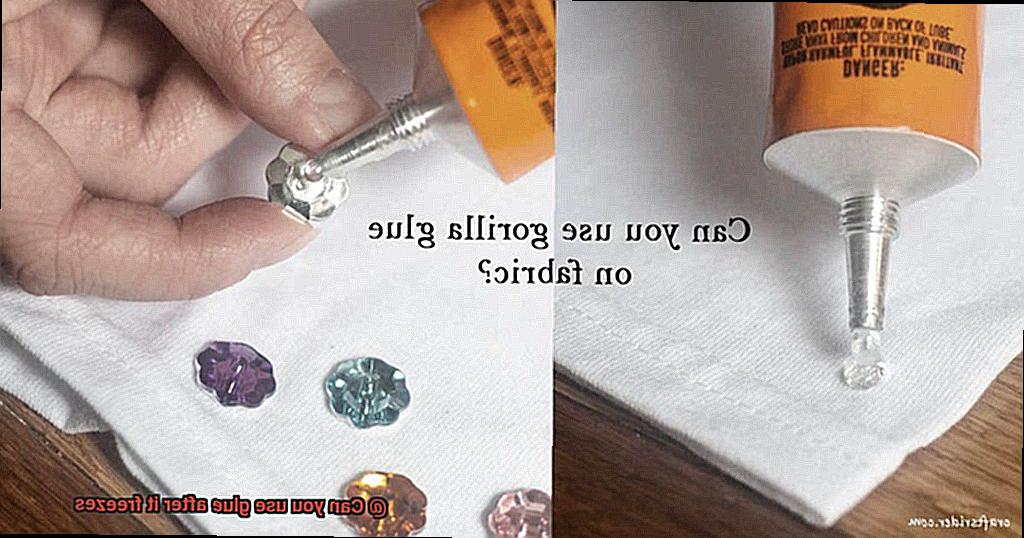
The temperature at which glue freezes plays a pivotal role in its bonding properties. Glue that freezes at lower temperatures undergoes more severe structural and property changes compared to glue that freezes at higher temperatures. Therefore, accidentally freezing your glue may yield varying outcomes depending on the specific type and brand you are using.
Recommended Precautions:
To maintain optimal bonding properties, it is generally advised to steer clear of using frozen glue for important or critical applications. The risk of failure or weak bonds skyrockets when utilizing frozen glue. If you find yourself with frozen glue, it is best to thaw it slowly at room temperature before attempting to use it again. Rapid thawing or heating can further compromise its already compromised bonding properties.
Thawing Out Frozen Glue
Imagine the frustration of reaching for your trusty bottle of glue, only to find it frozen solid in the depths of your freezer. Your craft projects come to a screeching halt as panic sets in. But fear not. With a little patience and the right techniques, you can thaw out that frozen glue and get back to creating in no time. In this comprehensive guide, we will delve into the science behind frozen glue, explore various thawing methods, and provide tips to ensure your glue regains its adhesive power.
Understanding the Science:
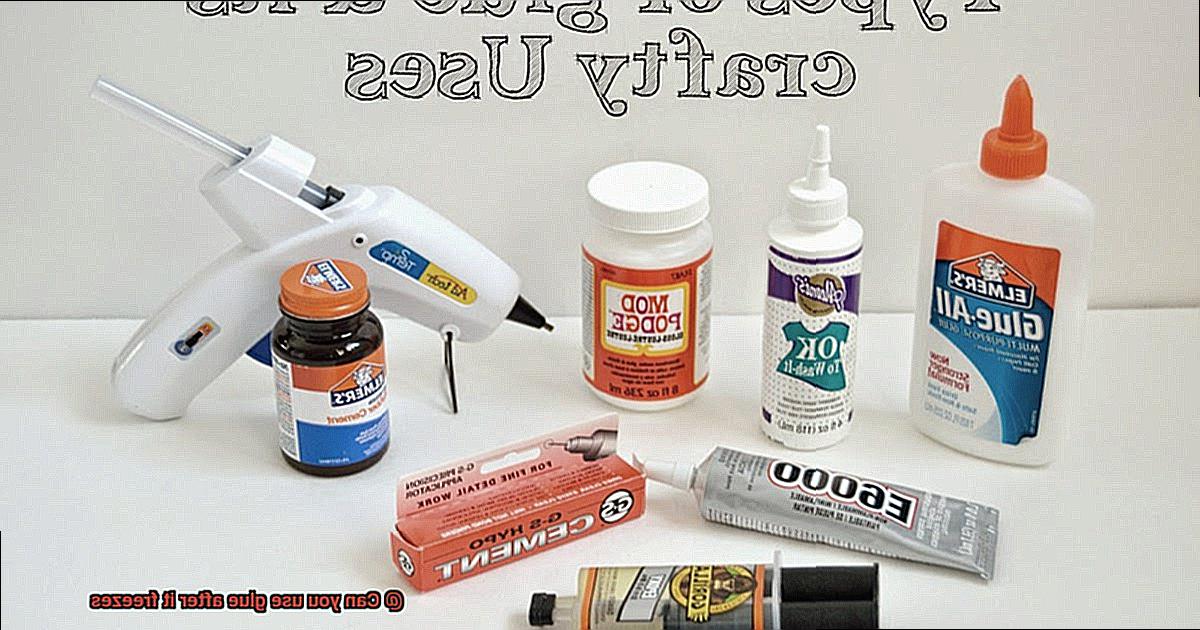
When glue freezes, the water content within it expands, causing the glue to become clumpy and separated. This change in consistency affects its bonding properties. The lower the temperature at which the glue freezes, the more severe these changes become. Using frozen glue for important projects can lead to weak bonds and potential failure.
Thawing Methods:
- Natural Thawing: The simplest method is to let the glue sit at room temperature and naturally thaw out. This gradual process allows the glue to return to its original consistency without compromising its adhesive properties.
- Warm Water Bath: For a quicker thawing process, immerse the frozen bottle or tube of glue in a bowl of warm water. The gentle warmth melts the ice crystals within the glue, restoring its original texture. Avoid using hot water as it can impact the adhesive quality of the glue.
- Hairdryer Technique: When dealing with a small amount of frozen glue, like a dried-up glue stick, a hairdryer can be your savior. Hold the hairdryer a few inches away from the glue stick and apply warm air evenly across its surface. Be cautious not to use excessive heat that might cause the glue stick to melt instead of thaw.
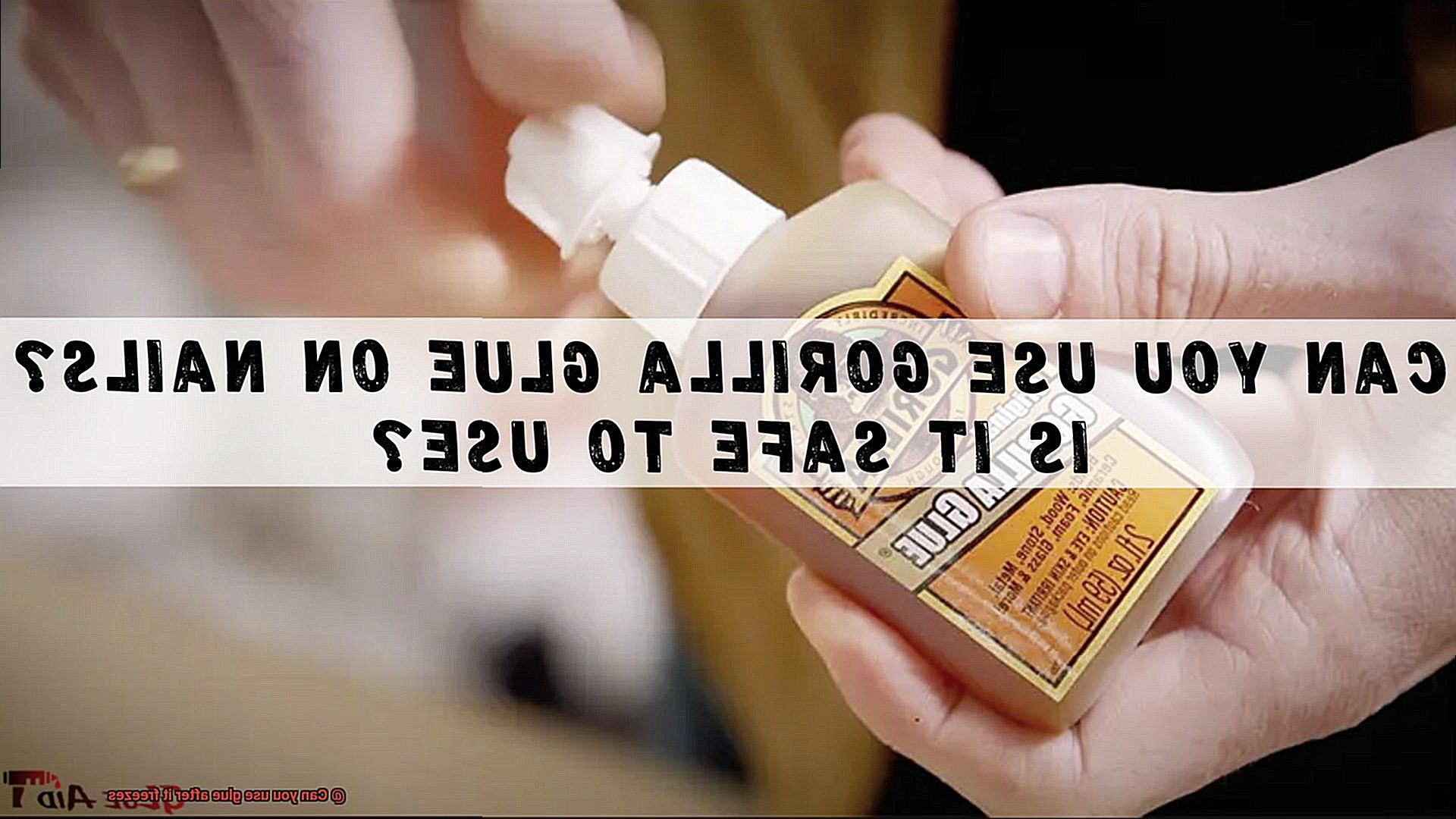
Ensuring Effectiveness:
Once your frozen glue has thawed, it’s crucial to check its consistency before using it. Gently shake or stir the container with a small stick or brush to ensure all components are well mixed. If you notice clumps or separation, it may be best to discard the glue as it may no longer be effective.

Restoring Adhesive Properties After Thawing
Dealing with frozen glue during a project can be incredibly frustrating. The extreme temperatures can cause the glue to lose its adhesive properties and become brittle, rendering it ineffective. However, fear not. There are steps you can take to restore the adhesive properties of thawed glue. In this article, we will delve into the science behind frozen glue, explore effective thawing methods, and offer tips to ensure your glue regains its adhesive power.
Understanding the Science:
When glue freezes, the water content within it expands, creating cracks and gaps that weaken its strength. Thawing the glue may not fully restore its original adhesive properties, but there are ways to improve its effectiveness.
Thawing Methods:
- Natural Thaw: Allow the frozen glue to thaw naturally at room temperature. Patience is key here, as this method may take some time. Avoid exposing the glue to direct heat sources, as this can cause further damage.
- Warm Water Bath: Place the container of frozen glue in a bowl of warm water. Be sure that the water is not too hot to prevent altering the glue’s composition. Gradually warming the glue helps reduce brittleness and aids in restoring its adhesive properties.
- Hairdryer Technique: Use a hairdryer on a low heat setting to gently warm the frozen glue. Remember to keep a safe distance from the container and avoid overheating.
Restoration Steps:
- Thorough Mixing: After thawing, thoroughly mix the glue to ensure any separated components are properly combined.
- Straining: If the thawed glue appears lumpy or uneven in texture, strain it through a fine mesh sieve or cloth to remove impurities or solidified particles.
- Testing Adhesive Properties: Before using the thawed glue on important projects, conduct a small test by applying a small amount onto a test surface and allowing it to dry. Check if the bond is strong and durable, as this will indicate if the adhesive has been successfully restored.
- Consider Fresh Adhesive: If the thawed glue does not perform as desired, it may be necessary to discard it and use fresh adhesive for optimal results.


Prevention is Key:
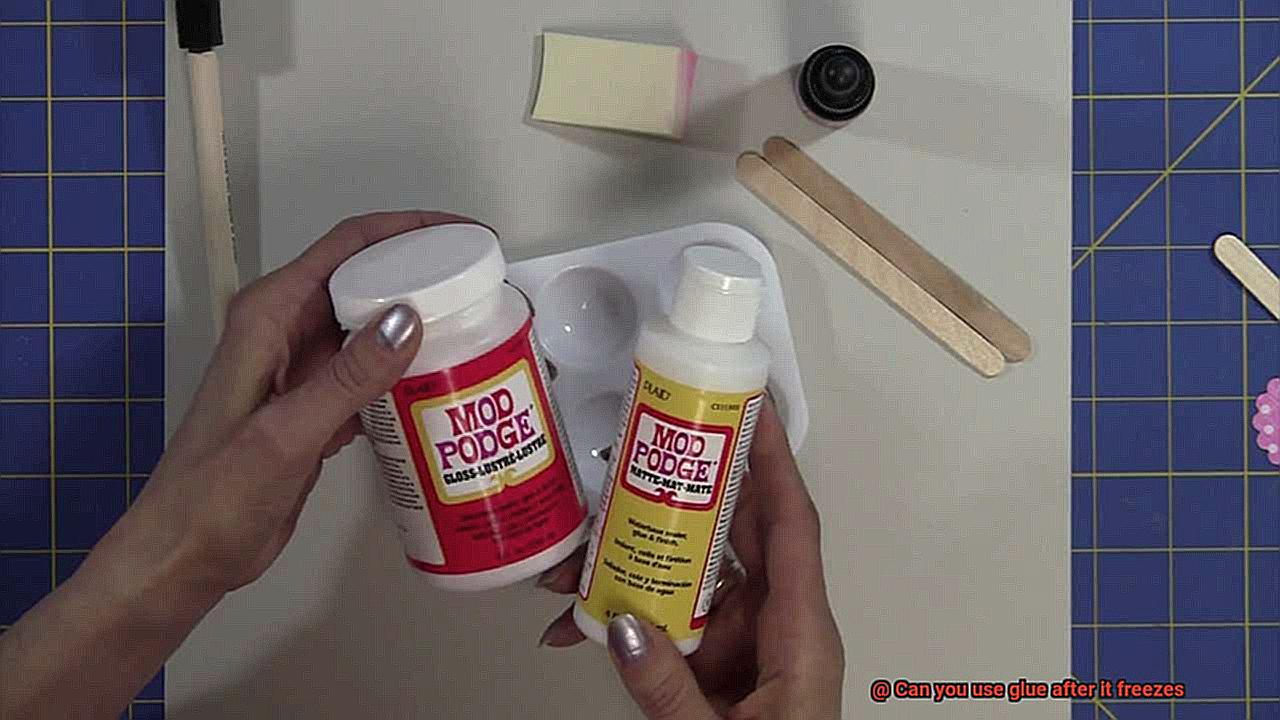
To maintain the effectiveness of adhesives, store them in a cool, dry place away from extreme temperatures. This simple preventative measure can help prevent freezing and preserve adhesive properties for longer periods of time.
Storing Glue in Cool, Dry Places
Glue is the unsung hero of countless projects, offering a versatile and essential adhesive solution. But to make sure your glue remains ready for action, proper storage is crucial. In this article, we’ll delve into the importance of storing glue in cool, dry places. Let’s explore the science behind it.
Temperature Sensitivity:
Glue is no fan of extreme temperatures, especially freezing conditions. The cold can wreak havoc on its chemistry, compromising both texture and effectiveness. Ice crystals form within the glue, weakening its adhesive properties. To avoid this sticky situation, store your glue between 50°F and 75°F (10°C and 24°C) in a cool environment.
Consistency Matters:
Ever tried using frozen glue? It’s a real sticky mess. Freezing causes glue to separate or lose its adhesive power, making it a challenge to use effectively. By storing glue in cool conditions, you maintain its consistency, ensuring it’s always ready for your creative endeavors.
Moisture Woes:
Temperature isn’t the only culprit; moisture can also ruin glue’s performance and durability. Storing glue in dry environments prevents moisture from seeping in and compromising its integrity over time. Keep your glue away from humid areas and moisture sources to keep it at peak performance.
Shelf Life Extension:
Proper storage practices go beyond convenience; they significantly extend your glue’s shelf life. Optimal storage conditions ensure your adhesive remains effective for future projects. No more wasted time or money on dried-up or ineffective glues.
Cold-Resistant Glues for Working in Cold Environments
Working in cold environments can pose challenges when it comes to finding the right glue for your projects. However, with the right cold-resistant glue, you can tackle your cold-weather projects with confidence. In this blog post, we will explore the key factors to consider when choosing a cold-resistant glue that can withstand freezing temperatures and still provide strong bonds.
First and foremost, let’s talk about temperature range. Not all glues are created equal when it comes to cold resistance. Some glues can handle extreme cold temperatures, while others are only suitable for mildly chilly conditions. So, it’s important to select a glue that can withstand the specific temperatures in your working environment.
Next up, material compatibility. Different glues are designed for bonding specific materials. For example, if you’re working with metal surfaces in a cold environment, you’ll need a glue that is specifically formulated for metal bonding. So, make sure to choose a glue that is compatible with the materials you will be working with.
Now, let’s discuss adhesion properties. Cold-resistant glues should be able to maintain their bond strength and durability even in freezing conditions. Some glues may become brittle or lose their adhesive properties in the cold, so it’s crucial to select a glue with excellent cold-temperature performance.
Application method is another important consideration. Look for glues that come in convenient applicators that allow for easy and precise application, even in cold conditions. Nobody wants to struggle with a glue bottle that won’t dispense properly when their fingers are freezing.
Lastly, always follow the manufacturer’s instructions and guidelines. They will provide valuable information on how to properly apply the glue and maximize its performance in cold environments.
So there you have it – the key factors to consider when choosing a cold-resistant glue for working in cold environments. By taking into account temperature range, material compatibility, adhesion properties, application method, and following the manufacturer’s instructions, you can select the perfect glue for your specific needs and ensure successful bonding in chilly conditions.
1nEgFzKl60g” >
Conclusion
After freezing, many people wonder if glue can still be used.
The answer is yes. Despite its icy state, glue can still be effective and serve its purpose.
In fact, frozen glue can often be thawed and used again without any issues.


